










BY EVELYN DU
Coordinator
BY JOELLE HUYSMANS
Editor
Trustee voices concerns at forum
On Feb. 25, the California Forum on Ethnic Studies in Public Schools invited parents, educators, and public officials across the state to share their opinions on the ethnic studies curriculum. The online event was hosted by the Israeli-American Civic Action Network, an organization dedicated to strengthening the United States-Israel alliance, and focused on alleged lack of transparency, the role of critical race theory, and potential ideological bias in the course.
Jennifer Jacobson, a clerk and trustee of the San Mateo Union High School District (SMUHSD) Board, participated in the forum. Identifying
herself as a parent and a trustee, Jacobson spoke about her child’s negative experience in the course and raised concerns about the course’s placement in ninth grade, the incorporation of ethnic studies themes into history classes, and the belief that it “transforms students into activists.” She also encouraged parents in SMUHSD and other districts to file lawsuits against school boards to “bring light to problematic content or interactions.”
“I’m not seeking to make ethnic studies go away… That’s not a pragmatic approach, even if I wanted to,” Jacobson said in an interview. “But what I can do is raise these questions about how we can make it better, raise these concerns that are substantive.”
Craig Childress, president of the SMUHSD Teachers Association, said in an interview that he was primarily concerned about the nature of Jacobson’s comments as a trustee. Childress encouraged the board to censure Jacobson, warning that her actions could divert funding from the district and reflect a “call for action against the SMUHSD community.”
“My concern is based on the general tenets of what a trustee’s duty is, which is to support and defend public education… and not to suggest that the best way to interact and to address concerns [is] to file complaints, file lawsuits, and take action that might threaten harm to the district,” Childress said.
See “ETHNIC STUDIES,” page 2

BY INY LI Business Manager
For many transgender athletes, the playing field isn’t always level, not necessarily because of skill level, but because of recent policies aimed at discriminating against transgender athletes. For senior Jasmine Pineda, a transgender woman and varsity cheer captain, the journey to feeling like “just a normal girl” took years to materialize into reality.
“Navigating my identity was a really interesting process,” Pineda said. “I knew I was different by the time I was five years old, and I knew I wanted to express female-like characteristics even though I didn’t know what that meant. The pandemic changed everything since I got the time to find who I was, but it wasn’t easy — it was a battle with myself for a while, and trying to accept myself.”
But this battle for self-acceptance is quickly evolving into a national debate over LGBTQ+ rights. Since President Donald Trump began his second term in office, he has signed a series of executive orders jeopardizing the safety of transgender individuals. Vowing to eliminate America’s “transgender insanity,” Trump has already pushed to remove federal funding for youth gender-affirming care, ban transgender people from enlisting in the military, and declared that the federal government would only recognize the male and female sexes on official documents. His fourth anti-transgender executive order – “No Men in Women’s Sports Executive Order” – was signed on Wednesday, Feb. 25, ordering Title IX, the federal civil rights law prohibiting sex discrimination in schools, to ban transgender girls and women from competing in women’s sports.
“Coming from President Trump, these transphobic messages being perpetuated by the government aren’t necessarily surprising, but it’s definitely disappointing and just scary to be existing as a queer person right now,” senior and vice president of the Gender Sexuality Alliance (GSA) club Evie Scott said. “I think a lot of these policies are trying to put barriers in between queer people and trans people, and it’s just not true to what the community is.”
More recently, California Governor Gavin Newsom, a leading policymaker and long-considered ally of the LGBTQ+ community, stated on Thursday, March 6, in his debut podcast episode of “This is Gavin Newsom” that “it’s deeply unfair” for transgender girls and women to compete in
See “TRANS ATHLETES,” page 3
From pg. 1
According to an unofficial board statement from President of the SMUHSD Board of Trustees Robert Griffin, the board has not released any statements as of April 15, and there have been no formal requests for action to censure Jacobson.
Ethnic studies fuels debate as districts shape curriculum
After positive student feedback on a pilot course for ethnic studies in the fall of 2018, the SMUHSD Board of Trustees agreed to make introductory ethnic studies a ninth-grade course requirement starting in 2020. A year later, Governor Gavin Newsom signed bill AB-101, making the class a statewide graduation requirement starting in the 2025-2026 school year.
But the origins of ethnic studies date back to the 1960s when a coalition of students at San Francisco State University organized a strike demanding the college curriculum represent their histories as people of color in the United States. From there, ethnic studies evolved into a statewide academic field aimed at understanding the histories of marginalized groups.
A teacher, who requested anonymity due to public backlash, said that the purpose of the course is to share the experiences of a school’s student demographic. For this reason, state law allows school districts to develop their own curriculum but encourages them to follow the Ethnic Studies Model Curriculum guidelines.
“In San Mateo Union High School District, we have the teachers who teach ethnic studies come together to design the curriculum collaboratively,”
Assistant Superintendent of Curriculum and Instruction Julia Kempkey said. “So it’s a San Mateo Union High School District-specific curriculum that we use.”
Since the curriculum is flexible between districts, ethnic studies can sometimes be a source of controversy. When the San Mateo Daily Journal published an article about Childress’s suggestion to censure Jacobson, multiple letters to the editor followed suit. Among those was Holly Rothkopf, who wrote a letter to the editor saying that “there is a lot of confusion about what schools are teaching and which curriculum guides they are using for the ethnic studies course.” Recent concerns over ethnic studies have also prompted Public Records Act requests from community members seeking access to records of the course’s curriculum.
“[SMUHSD ethnic studies teachers] are following the legal requirement of providing the material because curriculum is considered a public record,” Kempkey said. “I think it’s unsettling and unnerving for teachers to have this level of scrutiny on the work that they’re doing. They are proud of the work that they’re doing in the course… I can’t speak for them because I am not one of the teachers, but it is unsettling from what I’ve heard.”
Some school districts are navigating lawsuits at the state level. In Sept. 2023, organizations filed a lawsuit on behalf of the Brandeis Center against
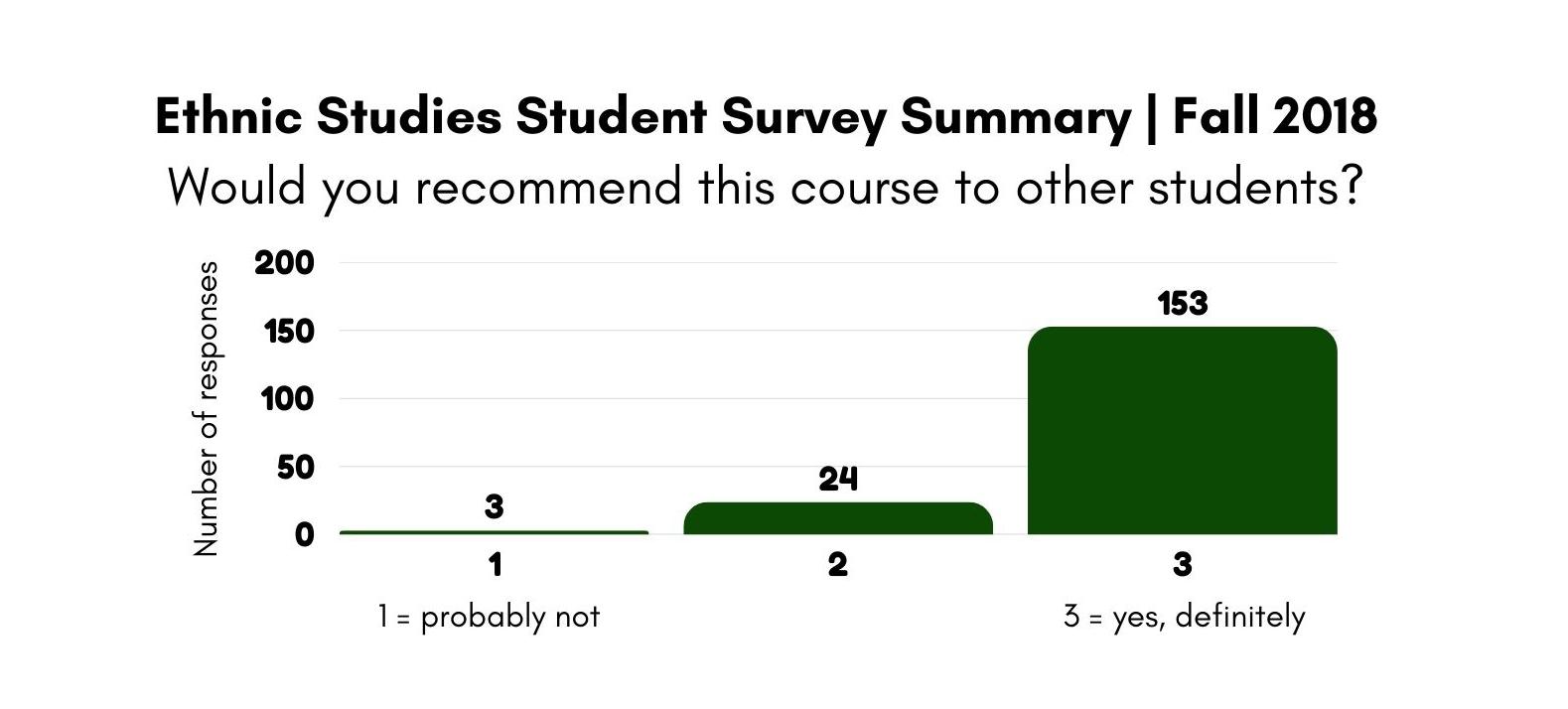
In the fall of 2018, the introductory ethnic studies course was offered — as either an optional elective or a replacement class — at Capuchino, Hillsdale, San Mateo, and Peninsula High School to pilot the curriculum. Based on positive student responses in an end-of-year survey, the SMUHSD Board of Trustees agreed to make ethnic studies a ninth-grade course requirement starting in 2020.
the Santa Ana Unified School District (SAUSD), claiming that their ethnic studies course was developed in secret and included antisemitic content. The county court settled Brandeis v. SAUSD on Feb. 19, deciding to discontinue three of their ethnic studies courses and revise them with transparency.
In light of ongoing debates, Assembly members Rick Chavez Zbur and Dawn Addis proposed Assembly Bill 1468 in February to standardize the ethnic studies curriculum. The bill requires the California State Board of Education to establish content standards and provide instructional materials to promote a more structured framework.
Students reflect on course experience
For the past four years, Burlingame has offered a mandatory ethnic studies course to all freshmen. Since its implementation, students have come
away with varying experiences and opinions about the course.
Junior Rohan Shah said he values the class, but acknowledges that the course can overlook the experiences of certain groups. However, he recognizes the challenges of representing all narratives in a semester-long course.
“I agree that [ethnic studies] is exclusive, but also it’s impossible to cover all minorities since it’s a semester-long course,” Shah said. “So I think what they do cover, especially since we do live in America, is the most relevant.”
In addition to the ninthgrade introductory course, Burlingame offers a year-round advanced ethnic studies elective for upperclassmen. Senior Jayden Wan is currently taking the advanced course and said both classes provide essential perspectives for understanding U.S history.
“When you take ethnic studies as a ninth grader, you may have some pre-existing percep-
tions of historical events,” Wan said. “And I would say that ethnic studies often supplements those understandings with something new, something that you didn’t know before.”
While Wan and Shah maintain unique experiences, they both agree that the core message of the course — to acknowledge all narratives in history — is a crucial skill for high school students.
“[There is a] cost of not acknowledging the more negative sides of history, because those realities are true,” Wan said. “I think by overlooking them, we lose out on some opportunity to do self-reflection on ourselves and our community.”

BY CONNIE LU Web Editor
After facing initial approval issues and nine months of construction, the gym has seen significant progress and is on track to finish by August 2025, according to Associate Superintendent and Chief Business Officer Yancy Hawkins.
Hawkins also said current construction is on schedule to
meet the allocated $40 million budget, which covers construction and furniture costs, but not any additional equipment upgrades.
Because the budget didn’t allocate for new equipment, Burlingame administration originally planned on reusing the existing equipment. But upon further consideration, Principal Jen Fong reached out to the Parents Group to fundraise for updated

equipment, which prompted the creation of the BHS Gym Campaign, led by campaign chair Meredith Thacker.
“The plan for the gym when it was being thought about was they would take out everything from the inside, like scorers’ tables and team chairs and weights for the weight room and the AV system, and then we would take all that equipment out of storage and then put it back in the brand new gym,” Thacker said.
“And when Principal Fong became aware of this, she thought, ‘that’s not ideal. We’re going to have a brand new gym. It would be great to have updated equipment for our students and for the broader Burlingame community.’”
The ‘BHS Gym Campaign’ hopes to raise one million dollars to purchase new weights, an updated sound system, a scorer’s table, mirrors for the dance room, wrestling mats, and an outdoor shade structure. Through the quiet phase funded by transformative do-
nors, the campaign had already raised $500 thousand, half of their initial funding goal. The campaign opened the fundraiser to the public on March 24, and has raised around 600 thousand dollars as of April 17.
Although the campaign will replace old equipment, Thacker said some of it will be repurposed for use in different parts of the new gym space.
“Outside of the new weight room, they’re going to have doors that will open up to a shade structure covered patio area, and they’re going to put [the old] weight equipment out there so it’ll be an outdoor weight room,” Thacker said.
Junior wrestler Miles Davis, who currently travels to Mills High School to use their gym facilities for practice and training, looks forward to the equipment upgrades at Burlingame and believes they will benefit all sports.
“Compared to the equipment we would use at Mills, it’s definitely going to be an improvement for just our over-
all endurance,” Davis said. “It’s going to be heated, we’re going to have hard practices, because it’s going to be in a more specific room. Not only is it going to be good for wrestling, but it’s going to be good for all of the sports, like volleyball and basketball, and it’s just going to be really good for the culture of our school, with rallies, and other events that happen.”
Beyond the amenities, the new equipment and refurnished gym are expected to provide more opportunities and resources for students and the entire community.
“Burlingame High School’s gym is used by all students,” Thacker said. “That is one thing that a lot of people that I’ve talked to: It’s not just a place for athletes, it’s a place for rainy day lunches, it’s a place that all students will have P.E. class, it’s a place for dances, it’s a place for pep rallies, it’s a place for robotics competitions. I could keep going on and on.”
From pg. 1
women’s sports. Newsom was joined by conservative political activist Charlie Kirk, who encouraged him to “step out and say no” to transgender women athletes winning in sports. Newsom’s agreement with Kirk on this “issue of fairness” has fueled extreme backlash from both Democrats and the LGBTQ+ community.
“It’s shocking because I always thought that Gavin Newsom was fighting for equality and fighting for LGBTQ+ rights,” Pineda said. “But what people need to realize is that trans people make up such a tiny fraction of professional athletes. Yet even though we make up such a small amount, we’re still ridiculed and at the center of everything. It’s disorienting for sure to hear my governor of the state that I love so much say that — it’s dangerous because I think that kind of like that message shifts people’s minds when they see a leader say such dangerous things.”
As of December 2024, “less than 10” transgender athletes participate in the National Collegiate Athletics Association (NCAA), according to NCAA president Charlie Baker. Just a day after Trump signed the “No Men in Women’s Sports Executive Order,” the NCAA changed its policy to limit women’s competition to athletes assigned female at birth, an act that makes the future for transgender women athletes “even more scary,” according to an anonymous student of a gender minority.
“The number of trans athletes that actually exist in the NCAA is alarmingly low for the amount of time that these lawmakers are spending on this issue,” the anonymous student said. “There’s so much sensationalism over such a small group of people who, at the end of the day, isn’t hurting anybody and is a part of our community. I think this debate was meant to distract people from things occurring in our country – it gives them a reason to fight a common enemy.”
Art teacher Eislyn Wolf-Noyes, who identifies as a transgender woman, hopes for a safer future for the LGBTQ+ community.
“I hope that people understand that there’s a lot of gender diversity, and it’s just a part of the human experience,” Wolf-Noyes said. “Transgender people have been around for as long as we have recorded history – we’ve always been there, and now we’re not going away.”

BY ALEX BERTELLI Senior Reporter
BY AKIRA NAKAMURA Staff Reporter
On Feb. 21, after President Donald Trump’s executive order formalizing the Department of Government Efficiency (DOGE), Elon Musk walked onstage at a rally waving a chainsaw. It was a striking analogue for DOGE, whose mission goal is to cut government spending deemed “waste, fraud, or abuse,” as put by the official White House directive, especially given how violent and careless it has seemed to many.
Community members have felt the impact of federal funding cuts both directly and through family and friends. World History teacher Jim Chin, for one, has a friend who formerly worked for the United States Agency of International Development (USAID), one of DOGE’s first targets, which gave foreign aid to at least 50 countries worldwide. On Feb. 3, government offices were blocked, and most of Chin’s friend’s team was notified of their firing. DOGE later severed 90% of USAID’s international contracts and fired an even higher proportion of its former 10,000 employees.
“It’s really rough for my friend who wanted to spend his life doing public service, and then got fired,” Chin said.
USAID also works to combat disease in foreign countries through programs such as the 2003 President’s Emergency Plan for AIDS Relief (PEPFAR), and other pipelines supplying first-rate medication to those in need for cheap.
“My blood boils when like Elon Musk and DOGE labels that as a waste,” Chin said. “You’re telling me a human life is not worth 12 cents a day?”
Nisha Acharya, an ophthalmologist at the University of California, San Francisco (UCSF), was an unlucky recipient of DOGE’s cost-saving efforts. Her team was investigating the safety of giving shingles vaccines to previously infected patients, and had been awarded a five-year NIH grant totalling over $3 million. On March 10, she was notified via email that her funding was abruptly terminated.
“It would never happen that you would have a grant cut overnight like this [with] no notice. There’s no precedent,” Acharya said.
The email stated that researching “vaccine hesitancy” went against agency priorities, but Acharya’s re-


Demonstrators assemble in Oakland on April 5 as part of the
search had an entirely separate focus, studying the vaccine safety as opposed to public attitudes.
“[It takes] years to get to this stage [and] be able to do this kind of work. To have it be shut down because of a computer program that doesn’t even understand what you’re doing, or [because] nobody looks at your papers or reads actually what the sentences mean, is really disheartening,” Acharya said.
Acharya also feels for her researchers and the younger generations hit by these changes. Chin likewise worries that this behavior could discourage high school students from going into public service or otherwise pursuing interests that have been shut down by the likes of DOGE.
Precedent isn’t the only way in which funding cuts are affecting students. On Thursday, March 20, Trump signed an executive order to dismantle the Department of Education. Although there is uncertainty over how exactly the department will be altered, layoffs have already occurred, and funding cuts are possible, according to Ian Bain, the San Mateo County Office of Education Executive Director of Strategy and Communications.
One of the department’s responsibilities is ensuring equality for students. It funds the Individuals with Disabilities Education Act (IDEA), a federal program that supports special education for students with disabilities, and channels millions of dollars to programs such as Title I, which supports students from low socioeconomic backgrounds and multilingual learners.
“The impact isn’t completely
clear in terms of what local schools will lose in terms of funding. The number I’ve heard is about 10% of funding. But I’m also hearing that there is an effort in Washington to ensure that that money goes straight to the states. So it could be that there’s no financial impact,” Bain said.
According to Bain, federal funding makes up around 10% of the funding for San Mateo Union High School District (SMUHSD) schools. However, he is uncertain about how much of that may be cut. SMUHSD Superintendent Randall Booker emphasized that it would be difficult to supplement any lost federal funds. Outside of funding, curriculum changes could be enforced by the federal government.
“Federal Department of Education funds are allocated based on compliance with federal law and administration policy… I could maybe assume [it’s trying to say that] if you don’t do some of the things that President Trump and his administration is outlining, you may lose that money. But I don’t know that for sure,” Booker said.
Students applying for financial aid may struggle to receive funds due to changes to the department, according to Principal Jen Fong.
“I have a high school senior, she will be applying for a federal student loan, I don’t know who’s going to administer that,” Fong said.
As of right now, Booker is unclear about when any changes could happen — only time will tell how the community, country, and world will be impacted by these administrative actions.

Art is a lot of things — to some a language, to others a fight, and infinitely more. It is also an Advanced Placement (AP) exam: in Burlingame’s AP Studio Art class, students develop a portfolio of 12 art pieces focused on a central theme, as well as five pieces displaying technical mastery, and submit it to the College Board. Juniors Lucas Zhu and Emily Meng share their perspectives on visual art and how it ties to their portfolios.


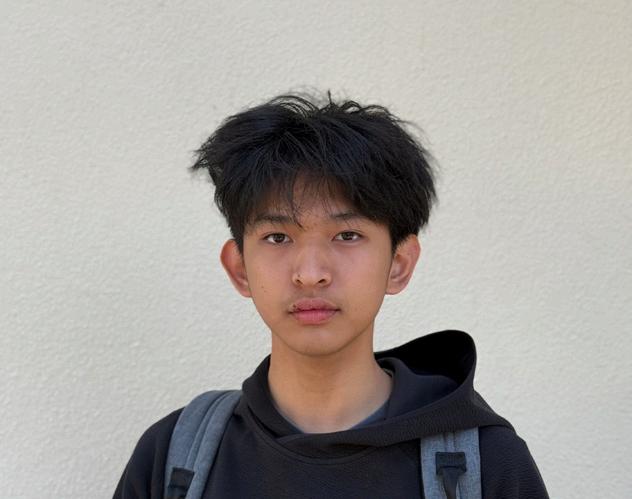

Junior Emily Meng’s recent journey through visual art, a discipline often rich with intricate detail, is, in a sense, a battle against herself. Also, as a junior in AP Studio Art, Meng’s portfolio focuses on overcoming perfectionism.
“Perfectionism to an extreme degree sort of starts to affect your self-worth,” Meng said. “It’s really damaging for the individual, and it can affect how you see yourself and the work you put out.”
The subjects of each painting vary. Some focus on mythology, while others reflect more abstract imaginings, but in accordance with her main through-line, each installment is a little more free-flowing than the last.
“I’ve been trying to loosen my brushstrokes and make it a little more abstract and less detail-oriented,” Meng said. “... I liked it because it wasn’t just something you could only portray subject-wise — you can use technique and materials to reflect what you want in a way that makes sense.”
Meng pursued art for years before joining the AP Studio Art
To junior Lucas Zhu, art is its own language. He began drawing at the age of three or four, learning through classes in China. Shortly after moving, art served as a “medium of expression” in lieu of English, and he continued experimenting. This school year, he joined the AP Studio Art class.
According to Zhu, his portfolio is about form versus essentials: the gap between the abstract and the concrete, the visible and the unseen. He borrowed the idea from Neo-Confucianism, which highlights his philosophical approach to art.
“I often like to dive into the moral debate side of the problem,” Zhu said. “... By having these thought processes, [I gain] a lot of understanding of not just myself, but how I understood world. And I feel like throughout the process of my art creation, I embed all these ideas and opinions into art.”
In 2024, Zhu received the Gold Key award from the Bay Area regional Scholastic Art and Writing contest, which received over 6,700 submissions that year. One of his pieces — “Power Point” — deals with uncertainty about the future. Zhu’s favorite part of painting is getting to portray ideas, as

BY ALEX BERTELLI Senior Reporter

class. Since joining the class, she’s been able to work on her favorite parts of the technical process, which are color-mixing and contrast, while also focusing on the fun aspects.
“I want to work a bit more on the form and getting better at structure and the more technical parts of art, while still maintaining the fun of it. I feel like that can be a little bit harder for a lot of people, but that’s really interesting,” Meng said.


well as how subjective those ideas may be.
“It’s finite, but abstract at the same time. Everyone sees the same thing, but they can have their own interpretations on the same piece of art,” Zhu said. “I think that’s one thing that’s really amazing about it.”
BY NATALIE GYDE Multimedia Editor
For junior Rowan Kelly, biking and walking to school isn’t solely a mode of transportation; it represents a change within school districts that could promote community building and lead to better sustainability.
Through the California Youth Climate Policy, Kelly discovered the San Mateo County Office of Education’s (SMCOE) Safe Routes to School program that encourages sustainable and greener transportation to school by implementing proj
California Youth Climate Policy, which promotes students to pass environmental-related school board policies in their district. And through that, I got involved with Safe Routes to School because I thought that promoting biking and walking is sustainable transportation, so that would be a good way to promote sustainability in our district,” Kelly said.
Although the program initially partnered with elementary and middle schools, SMCOE is expanding to high schools to establish its program across the San Mateo Union High School
Routes to School program,” Kelly said.
On Wednesday, Feb. 26, with the help of English teacher and Leadership advisor Bethany Li, Kelly sent out a Google Form to the student body, which included questions like how they get to school and any obstacles that stopped them from biking or walking.
“Over half the kids carpool, and convenience is what keeps kids from [biking or walking], but people are concerned about safety,” Kelly said.
Specifically, in the Google Form survey, Kelly gathered


“Forty percent of people say that they don’t feel safe having a bike [at school], I think we’ve had some incidents of bikes getting stolen. Another big issue we wanted to cover is e-bikes, because that is something that the Safe Routes to School program works with,” Kelly said.
Using survey results, Kelly aims to gain the attention of Superintendent Randall Booker in hopes to offer the program a future within SMUHSD.
“We thought that a good way to convince him would be to have data from high school students. So we use this form
as a way to get to learn and see if students felt like they would be open to biking and walking more by having events and having more safety,” Kelly said.
Through this program, Kelly hopes to make a genuine impact on safer bike lanes and increase overall sustainability by encouraging biking and walking.
“I’d like to change people’s mindsets around biking and walking. People, including myself, refrain from it because of the distance, or that it’s just kind of annoying to do,” Kelly said.
BY JOSIE WETTAN Copy Editor
In 1983, Mei-Hwa Liao arrived at NASA’s Glenn Research Center in Cleveland, Ohio, to begin her work as a Supervisory Mechanical Engineer. It was the culmination of years of hard work, passion, and grit — and yet, it was also a familiar scenario. She was the only woman engineer in the entire Structural Mechanics Branch.
More than a decade earlier, in 1967, Liao had studied civil engineering in Taiwan at National Cheng-Kung University (NCKU), where she was the only woman in her department. Later, she moved to the United States to pursue a graduate degree in structural engineering at the University of Detroit. Again, she found herself the only woman student in her department.
“I was scared when I entered the department building,” Liao recalled. “All the boys were sitting in front of building…watching me walking.”
Liao recalled that at the time, during the late ‘60s, the engineering field was heavily male-dominated. As a result, she said people didn’t always “trust her ability.”
“Some friends, very close friends, even [would] say that I was hired as a vase for decoration only,” Liao said.
At NASA, she encountered similar doubts. Early in her career at Glenn, one of her colleagues submitted a report to
their supervisor questioning the accuracy of her work while she was away for vacation. Liao believes that, at the time, few of her co-workers understood her capabilities. She said they underestimated her and didn’t show her respect.
“And after I prove[d] over [and] over, they start[ed] to respect me better,” Liao said.
Aside from being the only female in her department, Liao also had to navigate cultural barriers. While her co-workers would sit together in the cafeteria and talk about American activities like football, Liao often felt she couldn’t relate as she had never watched football before in Taiwan.
To bridge the cultural gap, she taught herself. Every time there was a professional football game, Liao started to watch and try to understand the rules and learn the players so that she could join their lunchtime conversations.
“I put effort to fit in because of the culture difference,” she said. “And I [did] see that since I started to feel comfortable to join their conversation, I [felt] better for myself, and people start[ed] to treat me like [a part of the] team too.”
Even though it was rare for women to pursue engineering during her childhood, Liao was not the first woman in her family to enter a technical field. For Liao, watching her older sister succeed in chemistry during college encouraged her to study
engineering.
“My field was civil engineering. That’s a male’s job, but I [thought] because of my science background, I [felt] that I can handle it, and my sister in college was doing so well,” Liao said.
By 1995, 12 years after she joined NASA, Liao was promoted to Chief of the Structural Mechanics Branch — the very branch where she had once been the only woman, and where she had to prove herself repeatedly. But as she approached leadership, she began to experience a shift in how she was treated. Colleges had gone from treating her with friendliness to hostility.
“You can tell they are so hostile and not willing to give you information,” Liao said.
Despite these challenges, the work itself continued to bring her pride. One of the most meaningful projects she and her team worked on was the International Space Station.
“We were so proud that the International Space Station was part of my team’s contribution,” Liao said.
Liao retired from NASA in 2016 after 33 years of service. When she first joined, she had been the only woman in the branch. By the time she left, five of the 20 engineers in her department were women — a change she helped bring about.
“I was hired in 1983 you know, I was the only woman. And gradually, women came in,” Liao said. “Especially after [I be-


came] the branch chief. I hired, other women, several women.
So when I retired, the whole
branch,
20 people we [had] five female engineers.”
BY AKIRA NAKAMURA Staff Reporter
It’s been quite the year for the Burlingame Model United Nations (UN). Not only have they found success and won numerous awards at multiple conferences this year, but in February, the club also had the opportunity to host its first conference.
Although the club had never hosted a conference before, adviser Jim Chin said the students were prepared and highly committed to making the conference successful. According to Chin, watching the students gain confidence and assert themselves as
they ran the conference was the highlight of the year.
“My favorite [conference was] the conference that the BHS students put on at the end of February… it was really cool to see a lot of students take on big leadership roles, run a committee with other high schools where they were kind of in charge of other high school students,” Chin said.
The conference began with an opening ceremony that featured a lecture from guest speaker Eric Schultz, a former Deputy White House Press Secretary to President Barack Obama.
“The morning started off really well when we had [Schultz]…

our featured guest speaker, that really set off a strong momentum for us,” Model UN president and senior Emmett Kliger said.
The conference was structured into three segments of competition, each lasting about two hours, and concluded with an awards ceremony. At the conference, there were three committees: one aimed to find a solution to deforestation, another simulated the Irish Potato Famine, and the last reenacted the American Revolution. Within each committee, students could receive awards for best delegate, outstanding delegate, most prepared delegate, and honorable mention. Delegates were awarded based on their participation in debates, the strength of their arguments, and their knowledge of their assigned policies.
According to junior Lyra Sheng, planning and organizing the conference was the most difficult part of the experience. In order to get enough participants, the club had to advertise extensively. To supplement, some Burlingame students also participated as delegates, although they were ineligible to win awards.
“Planning for the conference started last year around April
where we had to decide which committee types we wanted… the advertisement was the hardest part because it was really hard to get people to attend an event,” Sheng said.
In the end, about 40 delegates from multiple Bay Area high schools participated in the conference. Sacred Heart Cathedral Preparatory senior Jonah Lay said the conference’s smaller nature was more advantageous and easier to participate in compared to other conferences he has attended. Lay was happy with his experience and found it enjoyable rather than stressful.
“[Last conference I attended] there were so many students. So I wasn’t able to talk because there were just like 50 people in my room, everyone was just really good, and it was overwhelming. I really like this one a lot more because there were less people, and so everyone got to participate,” Lay said.
Junior and conference chair Anya Malhotra felt the conference was a success and thinks the group is capable of running a second, more ambitious conference next spring, a year after running their first.
“We definitely learned a lot
with our first conference, and I think that we’re looking to make our topics more interesting for other delegates… we definitely want to offer that and have more outreach, so maybe have 100 delegates come next year,” Malhotra said.
Even in competitions they haven’t hosted, Burlingame students have excelled. At a conference hosted by Berkeley High School’s Model UN club from March 7-9, Burlingame took home multiple awards.
“Competing [is] going really well. We just had [a] Berkeley conference… and we won research awards and outstanding delegate awards. So it’s a success,” Malhotra said.
Chin attributes the club’s accomplishments this season to a highly motivated group of underclassmen.
“We have a lot of really enthusiastic sophomores and freshmen… the new people we’ve gotten the past two years are super on top of it,” Chin said.
To wrap up the season, the club will attend its final conference of the school year during the first weekend of May at the University of California, Davis.
After junior Alex Rivas selected her class schedule for the next school year, she decided to drop one of her Advanced Placement (AP) classes. When she looked around at her friends and peers, though, she felt like she wasn’t doing enough. Despite taking three APs, Rivas still felt like her load was inadequate.
“I felt some stress after I had selected my schedule for the year, because I felt like I actually wasn’t
For history, government, and economics teacher Elizabeth Bellas, the high school experience should be more than just stacking APs and chasing prestige.
“High school is such a fun and special time. You’ll never be in high school again, and if you spend your whole time studying, that’s really sad,” Bellas said.
However, according to senior Annie Conway, a prominent culture of comparison still motivates students to take AP classes.

“There’s a lot of comparison between people — how many classes you’re taking, what type of classes,”
Conway said. “I think that people are always worried about doing better than other people.”
From Burlingame’s class of 2024, 18 students who took fewer than six APs, including two who took none, were admitted to a Top 25 school.
- Data according to Principal Jen Fong
compared to my peers, it wouldn’t be enough, because there’s people doing way more than three,” Rivas said.
AP classes are college-level courses designed to prepare students for a cumulative exam taken at the end of the year. Performing well on these exams can earn college credit, but according to junior Adrian Su, the motivation to take APs comes from a desire to prove academic dedication in an increasingly competitive college admissions environment.
“A lot of it is from college admis sions and I do enjoy the classes, but a lot of the time, the reason why I take these classes is to boost up my resume,” Su said.
According to U.S. News & World Report, 63% of Burlin game High School students took at least one AP exam between 2020 and 2023 — a majority, but far from the overwhelming expecta tion that some students feel. In certain social circles, it can feel like the only way to suc ceed is to pile on as many APs as possible.
The academic toll of this culture is also evident in students’ health and well-being, a pattern Bellas observed among her students.
“Students get a grade on something like an A minus instead of a 100% and then have a breakdown, because, again they’re on the edge of a breakdown from all the stress that they’re under,” Bellas said.
Despite the competitive culture APs can create, Bellas acknowledges that these classes can offer a sense of control in an otherwise unpredictable college admissions process.
“I know it’s really hard to get into schools these days, and it feels like taking an AP class is a tangible thing that you can do to make sure you’re going to get into a school,” Bellas said.
For Su, APs also provide an opportunity to develop his work ethic and learn to work at a college level.

“I
felt some stress after I had selected my schedule for the year, because I felt like I actually wasn’t do- ing enough…I felt that compared to my peers, it wouldn’t be enough, be- cause there’s, people doing, way more than three [APs].”
- Junior Alex Rivas
“A lot of people ex press that the only reason why they wanted to do the [APs] was because of the idea that you need to take a lot of AP classes to succeed,” Rivas said. “And I also think it has a toll on friendships because it makes everything so competitive.”
Despite the narrative that more APs equal better college eligibility, the data paints a more nuanced picture. Data compiled by Principal Jen Fong on Burlingame’s class of 2024 found that 52 of 69 students who took six or more AP exams were admitted to a Top 25 college. Yet, 18 students who took fewer than six, with two having taken none, were also admitted.
through this school is taking AP classes,” Su said. “They’ve all brought their own challenges, but they’ve taught me a lot of things, like how to study.”
However, the idea that whether or not a student takes APs is a marker of their intelligence still lingers in the minds of students selecting their classes.
“The toxic culture is taking as many APs as possible. If you don’t take an AP, you’re stupid,’” junior Sophia Yarmolinsky said.

At a School Advisory Council (SAC) meeting in November, Principal Jen Fong proposed setting a limit on Advanced Placement (AP) classes to address concerns about student mental health and course overload. Later, at a February SAC meeting, the issue was reopened, and Fong hoped to receive feedback, specifically from students, about her proposal. Despite the multiple discussions about AP limits, Fong said that parental backlash has stopped any policy from moving forward.
“I was trying to ask, should we discuss this in order to improve students’ mental health? And then it became something else. And then I said, let’s pull this back, because we don’t have any agreement,” Fong said.
Before Fong tabled the proposal, the topic had sparked debate among SAC members, who questioned whether the initiative was worth pursuing.
“We’ve returned often to this topic about creating an AP cap, and there are pros and cons to it,” senior SAC member Lucas Keeley said. “I would say there is a lot of resistance, especially amongst those who feel like the AP classes provide a unique opportunity to get certain content that wouldn’t otherwise be available.”
The desire to alleviate students’ stress is indisputable, but some members have articulated concerns that an AP limit would have the opposite effect. Par-
One of my big concerns is, if we’re trying to help with student stress, why would we go after AP limits of three when that affects a really small portion of the student population?”
Parent and SAC member
BY ZACHARY NEWMAN Managing Editor
BY KAYLEE HWANG
Social Coordinator
ent and SAC member Cyndi Wright said that during the November meeting, parents said they value student well-being but remain unsure about the benefits of an AP limit. Wright said there isn’t enough evidence proving that an AP cap would reduce stress or improve a student’s chances of getting into college.
“We brought up a lot of potential stress that could be increased due to the limitations. For instance, students going and taking classes at [The College of San Mateo] to stand out, kids focusing on other extracurriculars to stand out, since they couldn’t with AP classes,” Wright said. “We just weren’t sure whether or not it would cause more stress or be a help. It wasn’t clear to us that it wouldn’t impact some students’ ability to apply for colleges.”
Inspired by her daughter’s positive experience attending a school that limits students to three AP classes per school year, Fong proposed the cap as a way to pique students’ genuine interest in a subject and allow them time to explore their passions.
“This is informed primarily from having raised my own children who have taken AP classes, and they’ve taken several that are very formulaic, and I’m pretty frustrated as a parent, seeing them memorize but not learn, and seeing them lose interest in the subject,” Fong said.
Fong is not the only educator who has noticed that too many AP courses can cause stress and hinder
The number of public high school graduates nationally who have taken an AP Exam increased from 31.5% of the class of 2013, to 34.7% of the class of 2023.
- Data from College Board
BY JOSIE WETTAN
Copy Editor BY PAIGE CORNELIUS Staff Reporter
student performance. School coun-
selor Christina Berube also said that AP classes create misconstrued pressures that lead students to take them.
“I think there’s a misconception with students and with parents and families that you have to take AP classes in order to get into college,” Berube said.
“How about you take something you’re interested in, or that at least you’re good at, because you’re going to be miserable in the AP class that you don’t like. It’s that misconception that’s the key to getting into college when it’s not. It’s so much more than that.”
decide whether they have the bandwidth to participate in AP classes.
We haven’t even gotten to the point of solutions. Because the question is, should we talk about this? Is this something that the community wants to discuss and make a change? And the answer is, it’s too fraught that we can’t have a discussion.”
- Principal Jen Fong
For Keeley, the issue comes down to freedom of choice. Since no one knows a student better than themselves, only they can
“Personally, I’m an opponent of the AP course limit, not because I think that it’s [not] necessarily good or important to take an extraordinary number of AP classes, but I feel like creating a rule or barrier does not teach students to make healthy and appropriate choices for themselves, and I feel like we should create as much opportunity for choice as possible, and instead help people make their own informed decisions,” Keeley said.
Fong said the discussion has been postponed and will not be reintroduced at another SAC meeting this school year.
“We haven’t even gotten to the point of solutions. Because the question is, should we talk about this? Is this something that the community wants to discuss and make a change? And the answer is, it’s too fraught that we can’t have a discussion,” Fong said.
I think many parents assume that more APs will improve college prospects, but in reality, we know that colleges increasingly value balance, depth, and fit versus AP course quantity... Overloading can come at a cost for a lot of students, and this can be [through] anxiety, depression, burnout, and so by the time they reach this next stage in life.”

How do students feel about their classes?
The Burlingame B asked eight students from different grades and with different AP class experiences their opinions regarding the topic of AP classes. Here is what these students had to say.
1. What motivates you to take an AP class?
“I take so many AP classes because of academic validation and college standards. You have to make yourself the most complete candidate [for college].”
- Junior Sophia Yarmolinsky, currently taking 4 APs

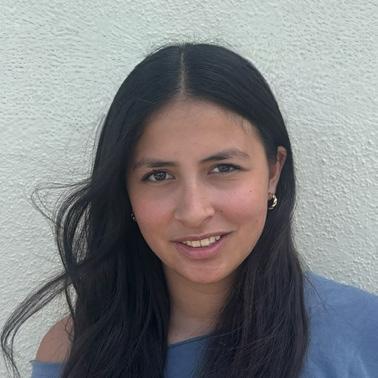
“I am taking APs that I’m genuinely interested in, especially I really like math and history... I do want to get into a good school. And I think it’s showing that you can keep the workload of college level classes.”
- Sophomore Ellie Warner, currently taking 4 APs
“If I can take the most rigorous thing that can help [for college], and if it’s accessible, I’ll take it to give me the best shot.”
- Junior Adrian Su, currently taking 5 APs

2. Why did you choose not to take any AP classes in highschool?
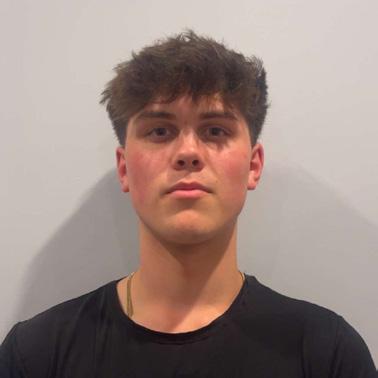
1,166,311 students in the class of 2022
(34.6% of U.S. public high school graduates) took at least one AP Exam.
“I don’t take AP classes because it’s less stress and less homework so I have more time for myself and my personal hobbies.”
“I prioritize my mental health before anything, and I knew that if I took a lot of APs, I would be struggling, and it wouldn’t be good for my mental state.”
- Senior Pilot Eis, currently taking 0 APs

3. Do you feel like your heavy AP workload is overwhelming?
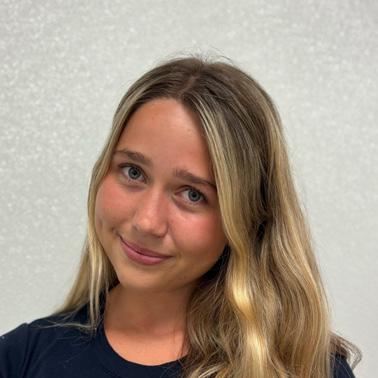
“Towards the end of the year [with the] AP exams, it was a lot of pressure, and just knowing I had those five tests that were looming ahead of me that seemed in the moment, so important for my entire future, I was really stressed out.”
- Senior Annie Conway, currently taking 6 APs
“First semester was really overwhelm ing because I’d never taken [an] AP class before. But then, second semester, I think I’m more used to it... I think it’s manageable if you put in the work.”
- Sophomore Danielle Song, currently taking 3 APs

BY KAI SHAH Staff Reporter
On Saturday, April 12, varsity baseball followed in the footsteps of the team many players grew up idolizing. As part of the 2025 High School Baseball Showcase, Burlingame faced off against Capuchino High School at Oracle Park in San Francisco, the home stadium of the Major League Baseball team, the San Francisco Giants. The matchup between the Peninsula Athletic League (PAL) rivals was the final matchup of a high school baseball triple-header.
For the players, playing a game in a professional baseball stadium as high school athletes was a memorable experience and a once-in-a-lifetime opportunity.
“It’s really cool [having] a bunch of fans here…we played really good as a team. We had a lot of energy. That kind of brought up the energy…it’s a really cool experience just to be out here where the Giants play. I’ll always remember it,” junior first baseman Slade Flores said.
Senior pitcher Dionisios Vorrises, who got the start against the Mustangs, enjoyed the rare and unforgettable opportunity.
“Not many people get to
play here, and it’s a once-in-alifetime experience, and I had a great time,” Vorrises said.
Before the game, players from each team got to hear their names announced over the loudspeaker as they ran from their dugout onto the field. The bigger stage and crowd of around 500 people brought increased excitement and nerves for the Panthers, more than any usual game.
“We don’t usually get this many fans, so the pressure is definitely on,” Vorrises said.
In the top of the first inning, Capuchino jumped out to an early 1-0 lead, scoring the game’s only run, as both offenses struggled throughout the rest of the game.
The Panthers recorded just one hit through the first four innings, but Vorrises kept the team in the game by only allowing one run through over six innings. Burlingame escaped a bases-loaded jam in the top of the seventh inning after sophomore pitcher Mark O’Grady relieved Vorrises.
The Panthers had opportunities to tie the game in the sixth and seventh innings, but failed to convert, leaving a total of four runners on base throughout the game. Burlingame had some loud contact late in the game that either went just foul or was hit di-

rectly to an outfielder.
“We actually hit a couple balls pretty good, kind of right at them, toward the outfielders. If a couple of those fell, we probably could have won that game, or been in the game even more, we could have tied it,” Flores said.
One bright spot for the Panthers’ offense was junior second baseman Jean-Luc Uharriet, who recorded two of the four hits for Burlingame.
Even in the loss, Vorrises credits his teammates for their effort and attentiveness.
“I think O’Grady always shows up. Oscar [Osuna Lo-
pez]’s one catch or one throw down that he had. Grayson [Howard] always shows up too. But overall, I think everybody was ready to play,” Vorrises said.
On the field following the game, the players took team photos and celebrated the occasion with family.
After the loss, the Panthers are now 7-9 overall and 2-5 in league play, placing them in seventh place out of eight teams in the PAL Bay Division standings. Moving forward, Flores believes the team needs to improve its situational execution and awareness.
“Just keep working and practice some situational stuff, try to get it down. Definitely get our bunts down and all that, because that can make a difference with the defense and all that. Just got to keep working on it,” Flores said.
Coach Shawn Scott’s message to the team in the postgame meeting was to keep their heads up with plenty of games still ahead to try to clinch the Central Coast Section playoffs.
“It’s a long season, we still have a chance to make playoffs, we just got to keep working,” Vorrises said.
BY ABBY ZARAHN Staff Reporter
Since January, three California state universities have cut sports from their respective athletic programs, with one university eliminating its entire athletic department.
Collegiate sports programs — especially non-revenue sports — are getting cut due to tighter budgets, declining enrollment, and statewide funding cuts. Sports that don’t generate significant revenue for a university’s athletic department, typically any sport other than football or basketball, are considered non-revenue sports.
Some of these cuts are happening at nearby universities: California Polytechnic State University has cut its National Collegiate Athletic Association (NCAA) Division I swimming and diving teams; San Francisco State University has eliminated three of its Division II teams; and Sonoma State University has eliminated its entire 11-sport Division II program.
For junior Joshua Lim, hearing about these cuts brought up concerns and fear about the abrupt changes in collegiate sports programs, especially as a student in the midst of the soccer recruitment process.
“It’s kind of concerning knowing that things could change in an instant…all of a sudden [you’re] being told that you’re not going to be playing college sports the next year,” Lim said. “You commit so much to play at this high level…and knowing that there’s this possibility that you might not be playing the next year.”
Senior Giana Johnson has committed to playing softball at the College of San Mateo in the fall. While the cuts won’t significantly affect her, she knows student-athletes who are now without a school to play at.
“My best friend goes to Sonoma State, and she’s on the track and field team, and she has to figure out where she’s going to go elsewhere for college because she only went there for the track team…she worked so hard to already get [there]...that’s really harmful for student-athletes,” Johnson said.
With cuts to athletic programs, there are fewer roster spots available on collegiate teams for athletes to commit to. For Lim, the decreased roster spots make it harder for prospective athletes to be recruited, as only a limited number can play at a time.
“You don’t make the roster, you don’t play the game,” Lim

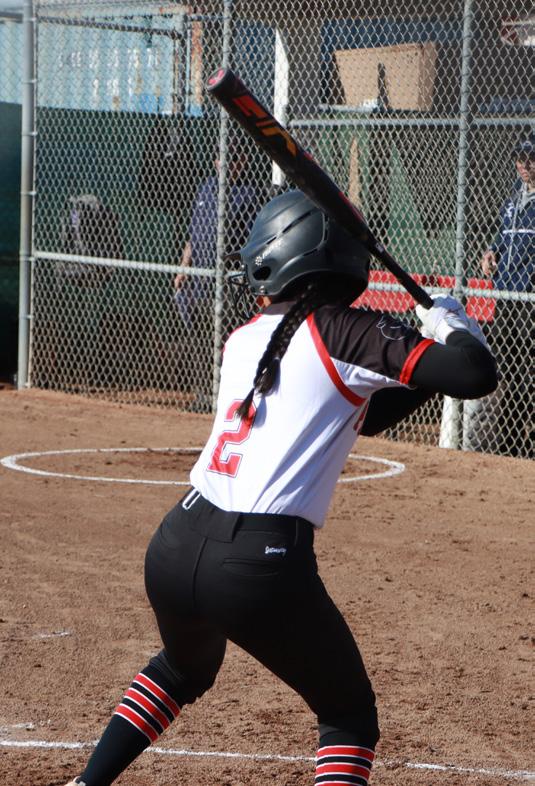
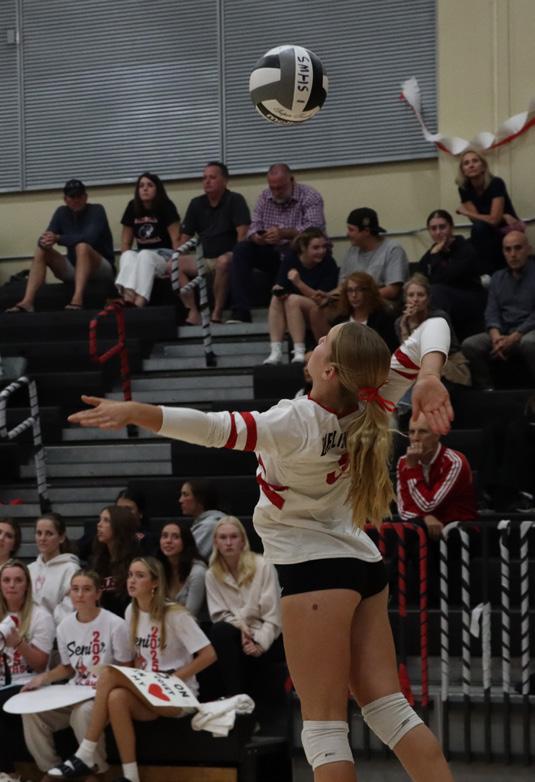
said. “There’s only 11 people on the field. You always have to fight for playing time, and also just having that roster spot and being recruited. So I think this news is that they might decrease roster spots, and it will definitely impact my decision, and I’m sure it’ll impact many others.”
Additionally, as a result of the NCAA vs. House settlement, an agreement to pay student-athletes based on their name, image, and likeness (NIL), Division I schools will face significant financial impacts. Therefore, some schools have begun to allot more money to their revenue sports programs as they await their non-revenue sports pro-
grams’ elimination.
“I do understand that it might be harder to keep [non-revenue sports] because they don’t bring in a lot of money, but I do think it’s unfair how the other sports [gain] more privilege because they’re popular,” sophomore varsity swimmer Alexa Chang said.
Freshman varsity volleyball and track athlete Elaina Newman expressed the danger of making general assumptions about the popularity of certain sports.
“I think it’s definitely a bit extreme to assume people’s viewpoints so much on specific sports that they’re cutting the
less popular ones and just keeping and even probably upping revenue a little bit on the more mainstream sports,” Newman said.
While the future of non-revenue sports remains uncertain, sports are a significant part of students’ lives — especially for athletes who plan to play sports to get into college.
“Only 7% of students in high school go to college for sports, and for those who have gotten into college, it’s a huge accomplishment,” Johnson said. “...For a lot of student-athletes, their sport is their entire life.”
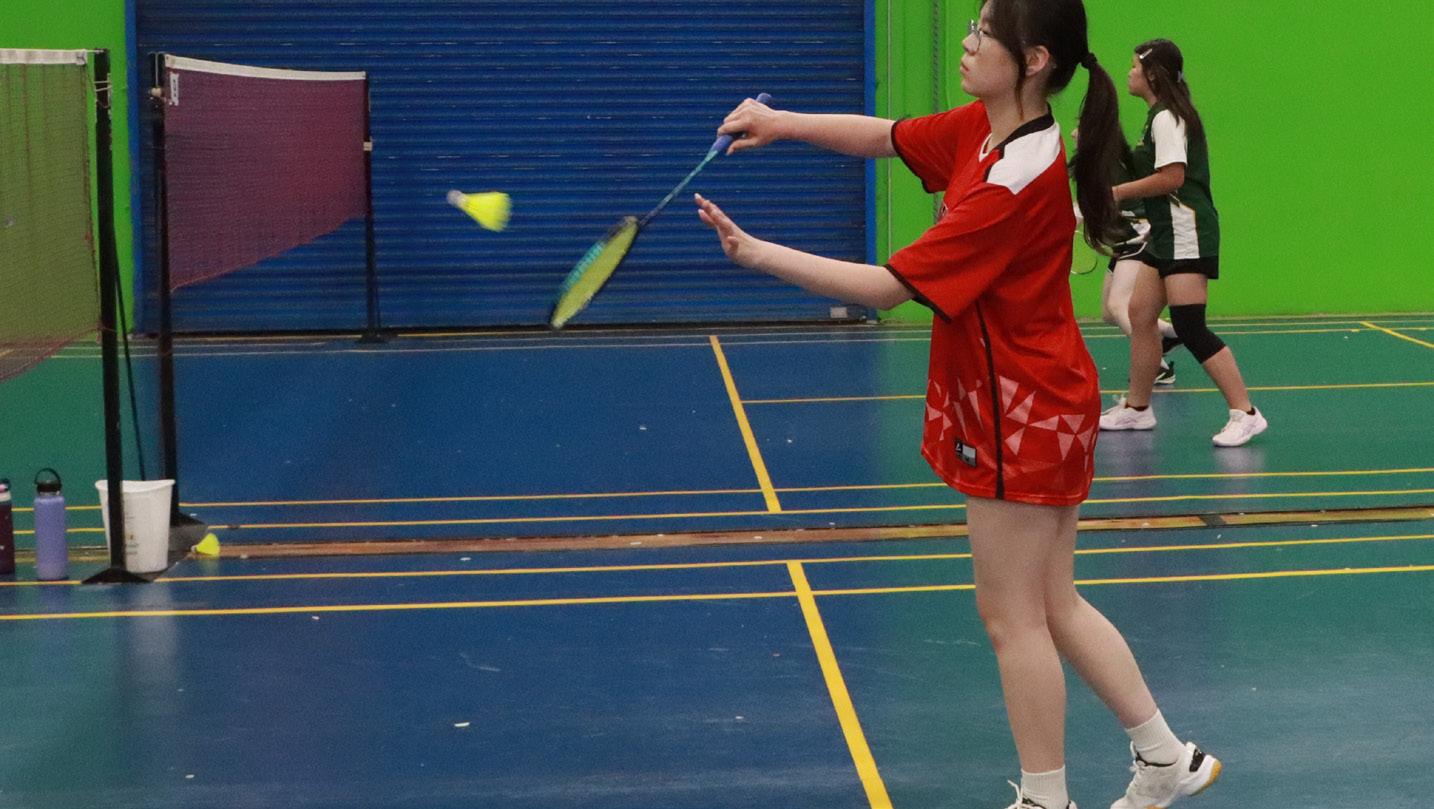
While the spotlight may always focus on offensive players who score goals, freshman center-back Ella Vuong’s contributions to her team aren’t as quantifiable but equally important to winning games.
“I think for our team we rely a lot on just practicing more and team encouragement when we’re playing games, we often cheer for each other [that is something] other schools may not do,” senior Ashley Zeng said.



“I think at the beginning of the season, people were a little bit shy, but I think because our team has, become closer, I think a lot of people have seen a lot of improvement in the season,” sophomore Alexa Chang said.

“We need to get more touches on the ball and get more familiarity. I think cohesion is a big thing, we’re a newer team. Most of the guys were on JV last year and we pulled them up,” senior midfielder Henry Bradley said.
While the spotlight may always focus on offensive players who score goals, freshman center-back Ella Vuong’s contributions to her team aren’t as quantifiable but equally important to winning games.

While the spotlight may always focus on offensive players who score goals, freshman center-back Ella Vuong’s contributions to her team aren’t as quantifiable but equally important to winning games. “Just keep working, keep our heads up. It’s a long season, we still have a chance to make playoffs, we just got to keep working…it all starts with practice. So getting more swings in the cage,” senior Dionisios Vorrises said.
3-2
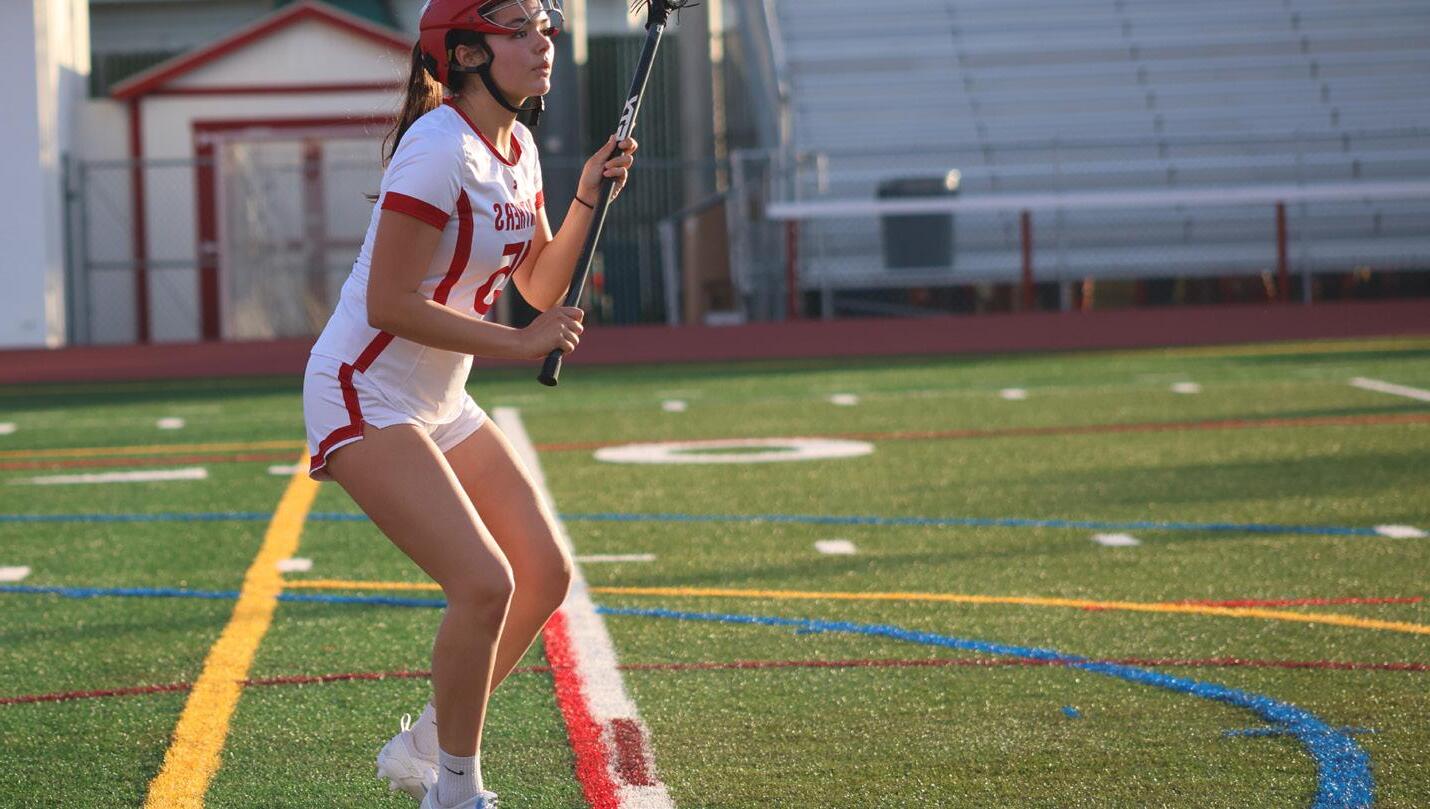

While the spotlight may always focus on offensive players who score goals, freshman center-back Ella Vuong’s contributions to her team aren’t as quantifiable but equally important to winning games. Quote: “We’re good enough where we’re not reliant on one good player. Any player on our starting six lineup could go out and shoot a good [score], and that’s super important for having a great season,” junior Cole Weyer said.


“We’re a strong team and with everyone pushing their hardest is what can get us to CCS. As long as we continue to support each other, and stay committed to these last few weeks, we got what it takes,” junior Natalia Spaelti said.

“Most of us have played together for years. There’s already a strong bond and good chemistry on the field. It definitely makes a difference during games when you trust your teammates,” junior Kendall Gorshen said.



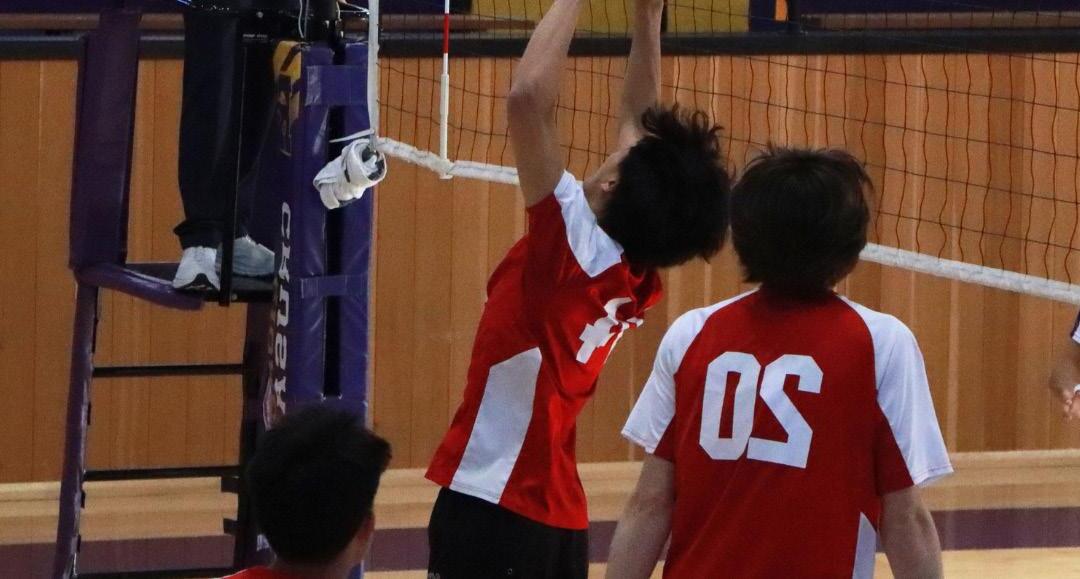
“All we can do is try to adapt. I think we have a really good chance at winning the league this season and going far in Central Coast Section [playoffs]. There’s not a team in the league we can’t beat,” senior Cole Ng said.
While the spotlight may always focus on offensive players who score goals, freshman center-back Ella Vuong’s contributions to her team aren’t as quantifiable but equally important to winning games.
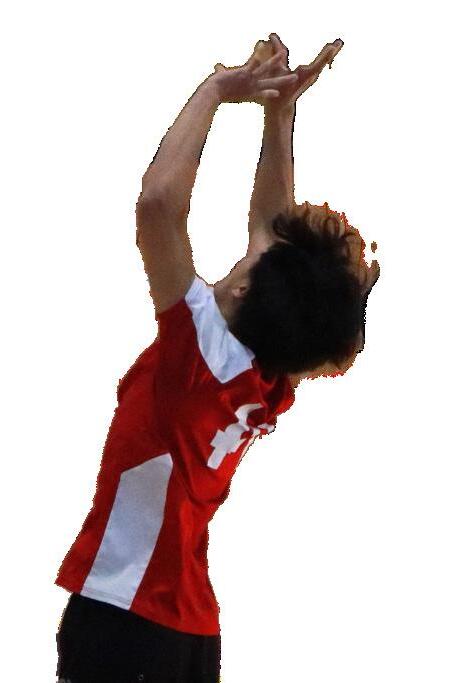

“We have a stronger lineup this year. We’ve all played over the summer, we’ve all gotten better, and we’re all ready to play overall. We’ve built up our team chemistry enough to where it’s easier to win,” junior Kieran Kilgo said.

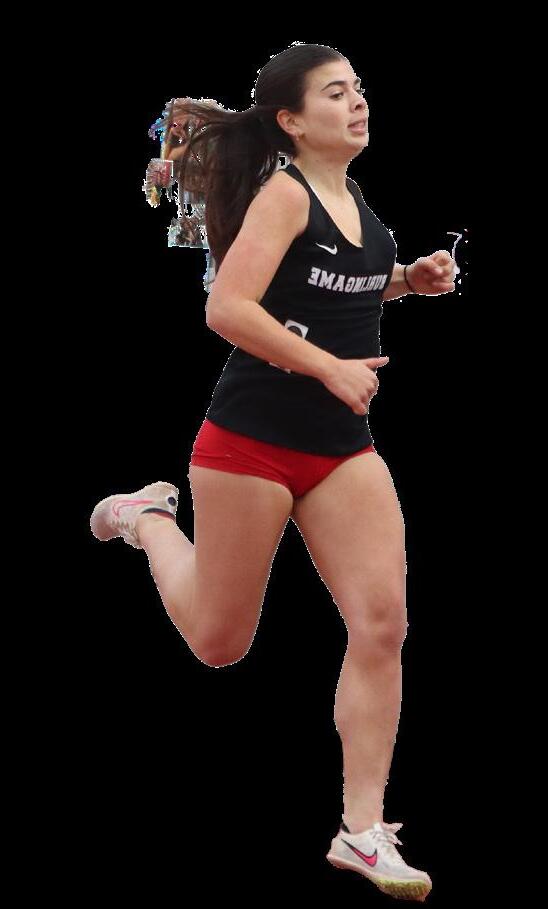
“I’ve discovered a sense of perseverance and discipline. The atmosphere on the team is supportive and every practice I see everyone working really hard which pushes me to try my best,” junior Mika Haggarty said.

Editor-in-Chief Sophia Bella
Managing Editors
Jeannine Chiang
Zachary Newman
Design Editor Joelle Huysmans
Social Media Manager Abby Knight
Web Editor Connie Lu
Multimedia Editor Natalie Gyde
Business Manager Iny Li
Head Photographer Henry Gardner
Diversity Coordinator Evelyn Du
Social Coordinator Kaylee Hwang
Copy Editors
Will Kriner
Sophia Doss
Josie Wettan
Senior Reporters
Alex Bertelli
Audrey Wei
Emma Yu
Staff Reporters
Paige Cornelius
Connor Leong
Akira Nakamura
Olivia Newman
Kai Shah
Chiara Wesley
Abby Zarahn
Teacher Adviser
Melissa Murphy
Policy Statement:
The Burlingame B is a student-run newspaper with the sole purpose of providing an open forum for student expression. Anything printed represents the opinion of the writer, but not necessarily that of the Burlingame B staff, the administration, or the faculty of Burlingame High School, or anyone affiliated with the San Mateo Union High School District. The Burlingame B does not discriminate against race, political orientation, ethnicity, religion, gender, sexual orientation or disability. Although The Burlingame B will never refuse to publish guest submission based on the aforementioned factors, we reserve the right to edit or not publish them.
Letters to the Editor
Disagree with the writers? Bring your letters to the room A120 or email them to <theburlingameb@smuhsd.org>. Letters may be considered for publication. The Burlingame B reserves the right to edit for clarity, length, and accuracy. We welcome all comments.
Website: www.theburlingameb.org
Phone: (650) 558-2899
Email: theburlingameb@gmail.com
Address: 1 Mangini Way, Burlingame, CA 94010
BY THE BURLINGAME B EDITORIAL BOARD
Tufts University PhD student Rumeysa Ozturk was walking down the sidewalk in Somerville, Massachusetts, when several masked federal officers suddenly approached her. According to NBC News, without showing a badge or any proof of authority, officers grabbed Ozturk, handcuffed her, and forced her into a car before she was first transported to a detention facility in Vermont. Ozturk was in the U.S. legally on a student visa, and now sits in a Louisiana detention center, which she described as “inhumane” and “unsafe,” according to NBC News.
Ozturk isn’t alone in her experience — according to BBC News, nearly a dozen international students nationwide were detained on college campuses. Though some students were targeted for criminal records and immigration violations, others, like Ozturk, were detained for “participating in some form of pro-Palestinian activity,” according to BBC News.
Secretary of State Marco Rubio said Ozturk was detained for alleged “pro-Hamas” activity related to the protests on the Tufts campus that occurred last year. Ozturk’s lawyers advocated that the only evidence connecting Ozturk to the protests is an Op-Ed piece she wrote for the Tufts Daily — Tufts’ student newspaper — in March 2024.
Currently, there’s minimal ev-

According to the Associated Press, as of April 17, 1204 students have had their visas revoked or their “legal status terminated.”
idence to show that Ozturk committed any crime or immigration violation. According to her statements, she’s been provided with little insight into her detainment status and was violated by several immigration officials, including an instance where her hijab was forcefully removed by a nurse in the Louisiana facility.
As a journalist and a U.S. visa holder, this attack on her freedom of speech by the U.S. government infringes the rights guaranteed to the people by the First Amendment. Under this amendment, American residents are entitled to publish their opinions and protest through peaceful demonstrations. Secretary of State Marco Rubio said the government has been revoking visas of residents “if they’re taking activities that are counter to … our national interest.”
As a journalist, Ozturk plays a crucial role in our nation. At all times, especially during times of turmoil, allowing journalistic freedom to thrive is a fundamental right permanently enshrined in the U.S. Constitution. The US Government’s silencing of Ozturk is a concerning and unconstitutional action, and if the government goes through with her deportation, it will represent a major violation of the First Amendment.
In many ways, Ozturk is just like any of us: a student, a journalist, and a legal US resident. Her detainment is an unorthodox and un-American exercise of power that can encourage similar violations in the future. Freedom of the press and fundamental rights are not only crucial for representing diverse perspectives but also the very principles on which our country was founded.
BY HENRY GARDNER Head Photographer
In the Trump administration’s official executive order declaring English as the official language of the United States, the first paragraph cites the fact that the Constitution was written in the English language. However, the administration neglected one thing: before the Constitution was ever ratified, it was translated. In fact, the Founding Fathers believed that to have a fair ratification process, everyone, regardless of their language, should be able to read the document’s contents. The document that the Trump administration uses to support the policy is ironically the very one that showcases its flaws.
Even today, hundreds of years after the Constitution was ratified, linguistic diversity remains a prominent feature of our nation. As of 2019, nearly 68 million Americans spoke a language other than English at home, according to the US Census Bureau. These multilingual residents serve crucial roles in our society, and their multilingualism is not a weakness but a strength.
As a part of his declaration, Trump also repealed Executive Order 13166, which was created under the Clinton administration. The executive order was aimed at ensuring that all federal services are easily accessible to those with limited English proficiency, so they can access any assistance they need. By doing

so, the Trump administration blatantly violated the Civil Rights Act of 1964, which prohibits discrimination based on national origin. As a result of this policy, Americans whose first language is not English will have a significantly harder time accessing vital government resources. Even more concerning than the direct impacts, though, is the message the executive order sends. Our country was and is built on the backs of immigrants, many of whom came to the country speaking a language other than English. While these immigrants adjusted to life in America, they initially spoke their native languages, so why should the next generation of Americans lose that privilege?
In an age with countless economic, social, and political problems, this executive order feels like an unnecessary and unwarranted attack on the groups that make the country what it is today. In an ideal world, America is supposed to be a nation of acceptance, where anyone can turn to get a fresh start. The idea of the “American Dream” has reverberated worldwide for decades, and a crucial part of that dream is the idea that anyone can succeed. By passing a policy that targets Americans whose primary language isn’t English, the Trump administration dishonors the nation’s legacy and sets a terrifying precedent for the future.
BY INY LI Business Manager
While some students wake up as early as four or five in the morning for sports practice or to finish up last-minute homework, junior Mohamad Elayan does it for a different reason — Ramadan, the ninth and holiest month of the Islamic calendar. For the 2 billion Muslims worldwide who celebrate Ramadan, the sacred month commemorates the first time God revealed the Quran — Islam’s central religious text — to the Prophet Muhammad.
To celebrate Ramadan, many Muslims unite through the ritual of daily fasting — known as sawm — from dawn to sunset, abstaining from all food and drink to foster their relationship with God and promote self-discipline. The fast continues each day until Eid al-Fitr, the festival that marks the end of the month-long observance. This practice is part of the Five Pillars of Islam, and one that Elayan follows throughout the month.
“For me, Ramadan is a time of self-sacrifice,” Elayan said. “It’s a time where we compromise a lot of the things we do in our daily lives to be focused on more spiritual things. I know my steadfastness and relationship with God are much better because I pray a lot more than I used to and I go to the mosque more often, but there are challenges obviously when I’m hungry during the school
day — I have a lack of focus and school becomes harder.”
To provide support to Muslim students like Elayan who are fasting throughout the school day, English teacher Reema Asia has provided her classroom as a space for Muslim students to pray, read the Quran, and unwind. As a practicing Muslim herself, Asia highlights the personal significance Ramadan holds for her, particularly in redirecting her mind to the “things that truly matter in life.”
“It’s almost like a reset button for me,” Asia said. “We become so consumed by life and things that we think are important, but Ramadan is a reminder that there’s religion, family, justice, and community that should truly be at the front and center of our minds. It’s liberating to be reminded of what matters and to not allow worldly or very trivial things to be so consuming of who I am.”
Because Ramadan falls at a time when juggling school or work can be difficult for Muslims to have a moment to break their fast, Samia Shoman, principal of the Bridge Academy of San Mateo Union High School District (SMUHSD), worked with district Family Engagement Coordinators to host the second annual Ramadan Potluck iftar on Wednesday, March 14, to bring together the local Muslim community.
“Being someone who has worked in the district for a long time and is a practicing Mus-

lim, this event is such a great way to create a supportive environment,” Shoman said. “I hope the people can see how our district values our Arab and Muslim community and our efforts around equity.”
Although junior Abedal Al-Darak acknowledges the efforts of uplifting the Muslim community and bringing more awareness to cultural events like Ramadan across the district, he hopes to see more cultural representation of the Arab community on campus.
“Many people don’t know about Ramadan or Eid as much, and that has impacted me a lot,”
Al-Darak said. “Our holidays have been hidden in American society – I haven’t seen a lot of representation about Ramadan in the hallways and throughout school, and I just think there needs to be a lot more cultural representation and recognition towards this holiday and this holy month.”
For Asia, celebrating Ramadan this year goes beyond her personal growth as a Muslim.
As an Arab Palestinian, she emphasizes how current global events impact her values and focus during this month of reflection.
“I’m Palestinian, and for
quite some time now, we’ve been witnessing terrible things happen to the people of Gaza,” Asia said. “They have not had adequate access to food and water, yet they’re surviving to the best of their ability. So this month is really forcing me to be grateful for what I have and to be empathetic to people across the world who are struggling. I believe that my religion is very deeply founded on justice, so I am just really making that a center of my religious practice — not just justice for me and my community, but justice for everyone.”

BY CONNOR LEONG Staff Reporter
The Iron Panthers put on a dominant performance at the Arizona East Regional, a FIRST Robotics Competition held from March 1922. After finishing in first place out of 42 teams in qualification matches, the Panthers placed second overall in the playoffs, and qualified for the World Championships for the first time since 2019, when the team won the event.
In the FIRST Robotics Competition, high school teams build robots to complete various tasks to earn points in a match. In any given match, two alliances of three teams will compete with each other to rack up points. Qualification match alliances are randomized, while in playoffs, the top eight teams from the qualification matches form permanent alliances and draft two other teams to join.


In addition, the Panthers won the Regional Engineering Inspiration Award for the first time ever — the honor is given to the team that best demonstrates a commitment to engineering outreach and education. Winning the prestigious award automatically qualified Burlingame for the World Champion-
“Honestly, the Engineering Inspiration Award was a little bit of a surprise. We’ve been really trying to work towards that since our team was founded, and this is the first time we’ve ever won it,” co-captain and senior Zack Weinberg said.
The team was also eligible for the World Championships through their rankings in
BY ALEX BERTELLI Senior Reporter
Row answers are entered left-to-right in order in their given row. Hexagonal answers are always six letters, starting at the flower-marked square in their numbered hexagon and running in clockwise or counterclockwise. (#) = number of letters in the answer. The six pink hexagons have special answers!
A. Burn unto blackness (6)
B. Cleans a pet’s hair (6) Most openly violent, as a fight (9)
C. Less cool (5)
Wart___ (3)
___Flanders, Simpson character (3)
Lion King villain (4)
D. “For example…” (4, 2) More cool, friendlier (5) African country, or just “that guy” (4)
E. Agriculture product (4) ___ v. Wade (3) Pink ornamental tree (8)
F. Chest muscle, for short (3) ___ and Gretel (6)
Consecutive wins or losses (6)
G. ___ Tuesday (4)
Trump’s daughter (6)
Blue of the sky (5)
H. Allow (3)
Reading and writing in school, for short (3)
1. Flower that sounds like it’s in space
2. Singapore’s national flower
3. Fascinating charm
4. Like a stretched rectangle or oval
5. Leave no ___ behind
6. Use old ideas unchanged
7. Belief systems
8. One of the first flowers to bloom in the Spring
9. Where to watch a movie
regional points, which are based on their cumulative result throughout the season. At the Ventura Regional in March, the team’s alliance placed third in the playoffs after the Panthers placed sixth in qualification matches. But at the Arizona East Regional, the team took things to the next level, utilizing the few weeks between competitions to fine-tune their robot.
“I don’t think anyone expected the kind of level of amazing performance we had,” Weinberg said. “Looking back on it, I’m so immensely proud of what myself and … every single member of our team has done to bring us to this.”
At the World Championships, which was held in Houston, Texas from April 16-19, the Panthers hope to continue growing while competing alongside other top-ranked international teams.
At the Arizona East Regional, junior and co-captain Serena Koopmans won the FIRST Dean’s List Finalist Award — an honor presented to just two students at the competition. The Dean’s List recognizes students with exceptional dedication to STEM, their team, and the greater robotics community.
Koopmans says she won the award for her contribution to the team in a variety of ways, like organizing events and community building. As co-captain, Koopmans is committed to creating a safe environment for all team members.
“I like to think that I’m making the robotics community more welcoming for those new freshmen … I’m helping them feel like they belong, because they do,” Koopmans said.
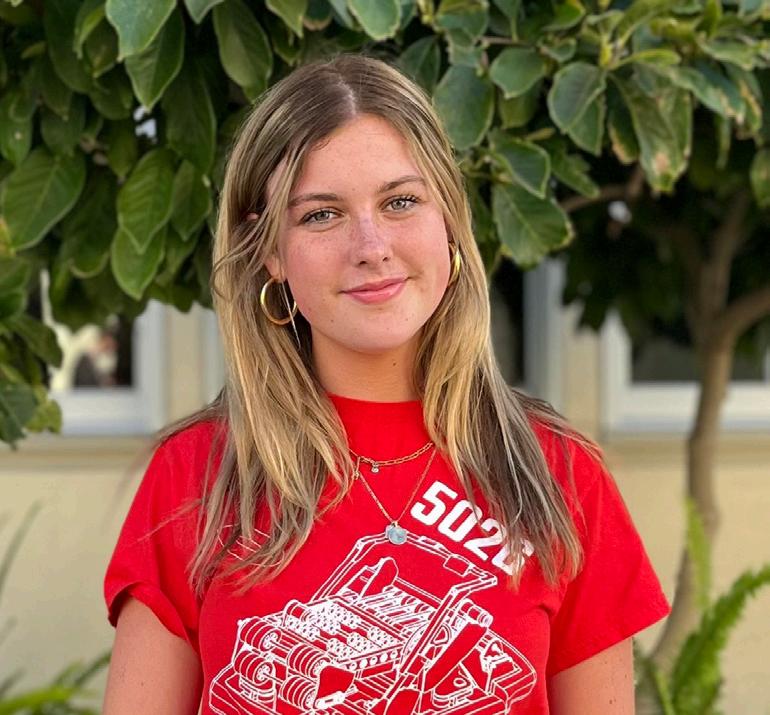
As co-captain of the Iron Panthers, Koopmans strives to create a positive and inclusive team environment.
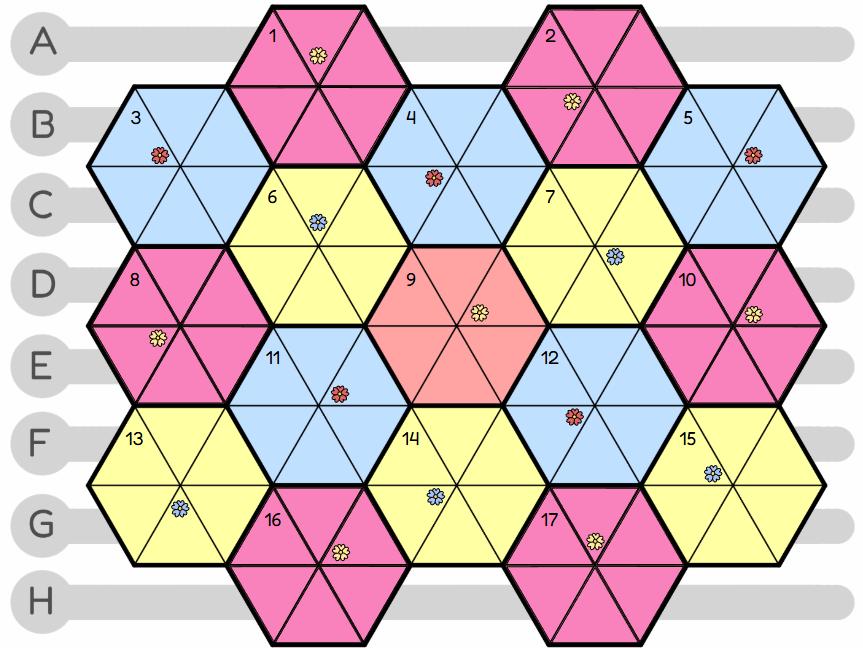
10. Bushy Central American flower
11. Child without parents
12. Powerful
13. Come to terms with

14. Foot joints
15. AHA! I’ve got it!
16. Flower that is also a color
17. Funnel-shaped flower

